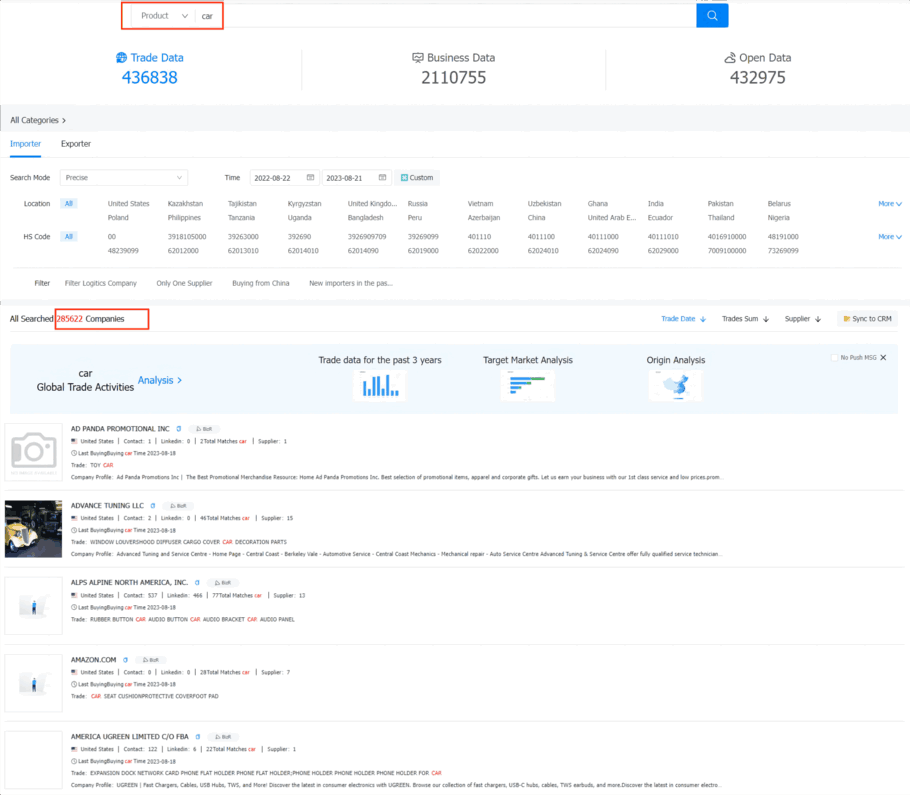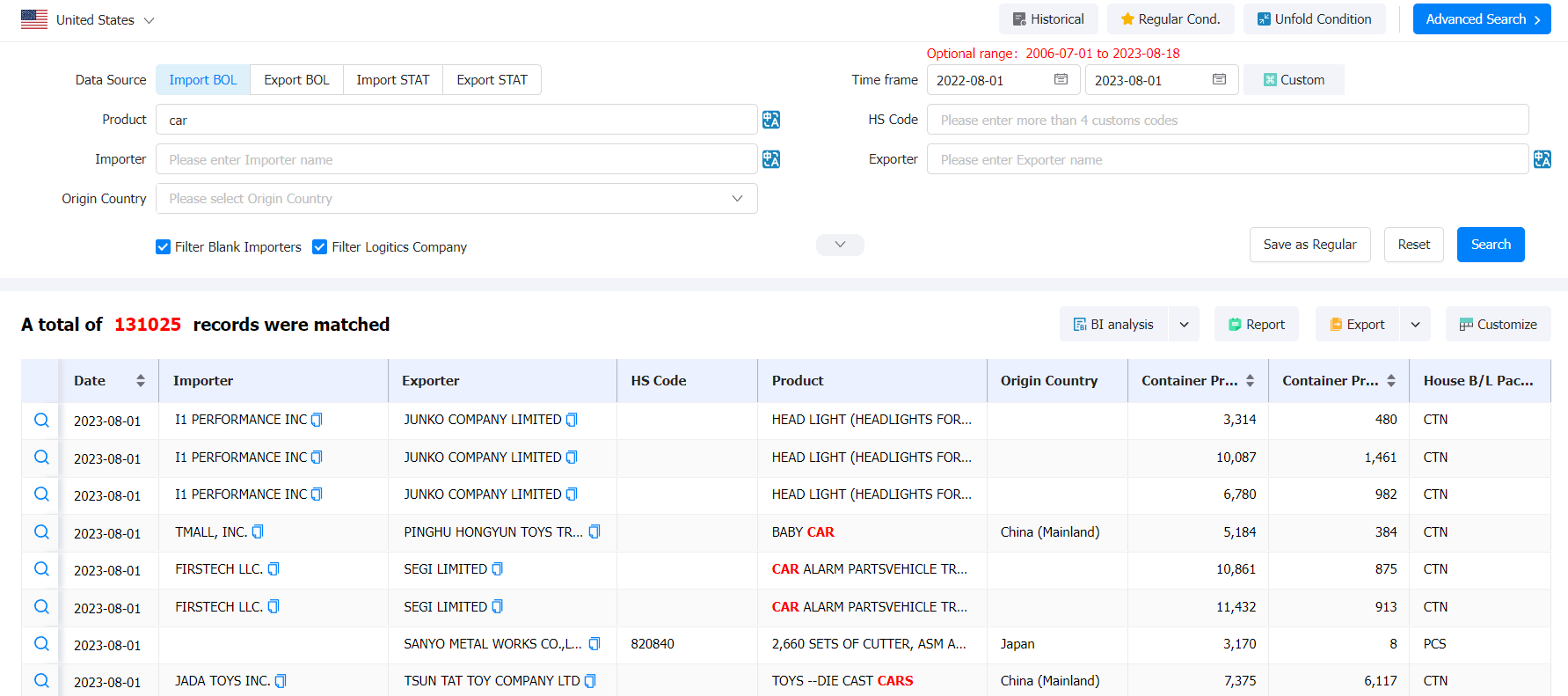 Trade Data
Trade Data
 15-12-2023
15-12-2023

Imports
In 2022, the Kingdom of Saudi Arabia purchased $140 billion worth of imports from the world. Compared to $152.3 billion in 2021, Saudi Arabia's import spending declined by -8.1% year-over-year.
In 2022, Saudi Arabia's top 5 imported products expenses include automobiles, processed petroleum, telephony devices including smartphones, dosage mixes of medicines, and unwrought gold.
Top Suppliers of Saudi Arabia's Imports
The latest data shows that Saudi Arabia's imports are mainly supplied by exporters from the following countries: mainland China (20.4% of Saudi Arabia's total), the US (10.2%), the UAE (8.2%), India (5.3%), Germany (4.9%), Japan (4%), Italy (3%), Egypt (2.8%), France (2.7%), the UK ( 2.4%), South Korea (2.2%) and Bahrain (1.7%).
Saudi Arabia's Top 10 Imports
1. Automobiles: $17.6 billion (12.5% of total imports)
2. Machinery including computers: $15.9 billion (11.4%)
3. Electrical machinery and equipment: $11 billion (7.8%)
4. Mineral fuels including oil: $5.58 billion (4%)
5. Pharmaceuticals: $5.55 billion (4%)
6. Cereals: $4.45 billion (3.2%)
7. Iron and steel: $4.1 billion (3%)
8. Plastics, plastic products: $3.9 billion (2.8%)
9. Gems, precious metals: $3.8 billion (2.7%)
10. Furniture, bedding, lighting, signs, prefabricated buildings: $3.8 billion (2.7%)
Saudi Arabia's top 10 imports account for 54% of the total value of products it purchases from other countries.
Furniture, bedding, lighting, signs and prefabricated buildings will grow the fastest in 2019. Value is among the top 10 import categories, growing by 42.9% from 2021 to 2022. Grains purchases ranked second, up 29.7%, driven by increased spending on barley, corn and rice.
Gemstones and precious metals saw the steepest decline among Saudi Arabia's top 10 imports, down -29.5% year-on-year. Prices in this category declined due to lower spending on imported jewelry and gold.
Exports
Saudi Arabia's exports to the world in 2022 are valued at $320.5 billion. This represents a 19.8% year-on-year increase in Saudi Arabia's total exports compared to $267.5 billion in 2021.
Top Saudi Arabia's exports include crude oil, refined petroleum and oil and gas.
Saudi Arabia's Largest Trading Partners
The latest pro rata figures show that Saudi Arabia's exports are mainly purchased by importers in mainland China (15.1% of the Saudi total), the United Arab Emirates (8.9%), India (8%), Turkey (5.5%), Singapore (5%), Belgium (4.5%), Egypt (4.1%), the United States (3.7%), Jordan (2.8%), Kuwait (2.5%), and the United States (3.7%), Kuwait (2.5%), South Korea (2.05%) and Malaysia (1.95%).
Saudi Arabia's Top 10 Exports
1. Fossil fuels including oil: $268.5 billion (83.8% of total exports)
2. Plastics, plastic products: $19.6 billion (6.1%)
3. Organic chemicals: $14 billion (4.4%)
4. Fertilizers: $4 billion (1.3%)
5. Aluminum: $2.3 billion (0.7%)
6. Inorganic chemicals: $1.75 billion (0.5%)
7. Gems, precious metals: $1.4 billion (0.4%)
8. Salt, sulfur, stone, cement: $1.1 billion (0.3%)
9. Copper: $977.2 million (0.3%)
10. Rubber, rubber products: $839.1 million (0.3%)
Saudi Arabia's top 10 export product categories account for 98.1% of its total global export value.
Salt, sulfur, stone, and cement are the 10 fastest-growing export categories among the top 10 export product categories, increasing by 172.9% from 2021 to 2022. The second highest growth in export sales was rubber, both as a material and as a product made from rubber products, which grew by 65.7%. Saudi Arabia ranked third in terms of growth in shipments of fossil fuels, including oil, up 30.3% year-on-year. This product category was boosted by increased revenues from Saudi crude oil exports.
The largest decline in Saudi Arabia's top 10 export categories was plastics, including materials and plastic products. Sales in this category declined by -16.9% compared to sales in 2021.
Customs data contains a vast amount of information, and extracting relevant customer contact information can be time-consuming. Is the outcome truly unsatisfactory, or is it due to using customs data in the wrong way, resulting in wasted effort and time?
Utilizing customs data for customer development involves accurately profiling all purchasers and their procurement systems in the target market. This approach swiftly identifies the highest compatibility customers, assesses their credit systems and procurement details, pinpoints premium customers and profit potential, enhances development efficiency, and elevates results. When developing new clients using customs data, consider the following three approaches for reference. (>>>Click to Get Free Access to Customs Data from 80+ Countries<<<)

1. Establishing a Customer Resource Repository by Country
Creating a customer resource repository is akin to your own work record sheet. Begin by utilizing trade tracking functionality to compile a list of all customers from a particular country. Next, perform specific analyses based on factors such as each purchaser's procurement volume, purchase cycle, product specifications, and supplier systems (with emphasis on examining the diversity or singularity of their supply channels; preferably retaining customers with diversified suppliers, as those relying on a single supply channel may be harder to develop). Lastly, filter out the potential high-quality customers constituting 30% of this country's total, and record them in your customer resource repository, allowing flexible categorization by country, time, customer name, follow-up steps, contact numbers, emails, and contacts. (>>>Click to Start Developing Customers for Free<<<)

2. Creating a Customer Resource Repository by Peer Companies
Have a solid understanding of peer companies' English names (including full names, abbreviations, etc.). Utilize the global networking capability of suppliers to generate a list of all clients associated with peer companies within the system. Following this, perform essential analyses on these clients based on factors like procurement volume, procurement cycle, product models, and others. Ultimately, identify and record the key customers of your targeted peer companies in your customer resource repository.(>>>Click to Start Developing Customers for Free<<<)

3. Cataloging New Customers from Each Country
For newly emerging customers from specific countries, use the trade search function to select the country, set the date range and limit product names or customs codes. Check "Newest," and the search results will display high-quality customers that emerged most recently in that country within the designated timeframe. Since these customers are newly established, with recent procurement transactions, their supplier stability might be unsteady. Therefore, prioritize following up with these new potential buyers. Lastly, record all these new prospects in your customer resource repository.、(>>>Click to Start Developing Customers for Free<<<)
All three strategies for utilizing customs data to develop customers can be tailored to your company's actual needs. Depending on market conditions, industry specifics, strategic requirements, etc., find the approach that suits you best, with the sole aim of classifying and organizing your premium customers. Once you've found suitable customers, the next step is to contact them precisely, employing various methods such as phone calls, emails, and online chats.
Category
Leave Message for Demo Request or Questions


 T-info
T-info T-discovery
T-discovery

 My
Tendata
My
Tendata Market Analysis
Market Analysis Customer
Development
Customer
Development Competitor
Monitoring
Competitor
Monitoring Customer Relationship
Customer Relationship





































































































































